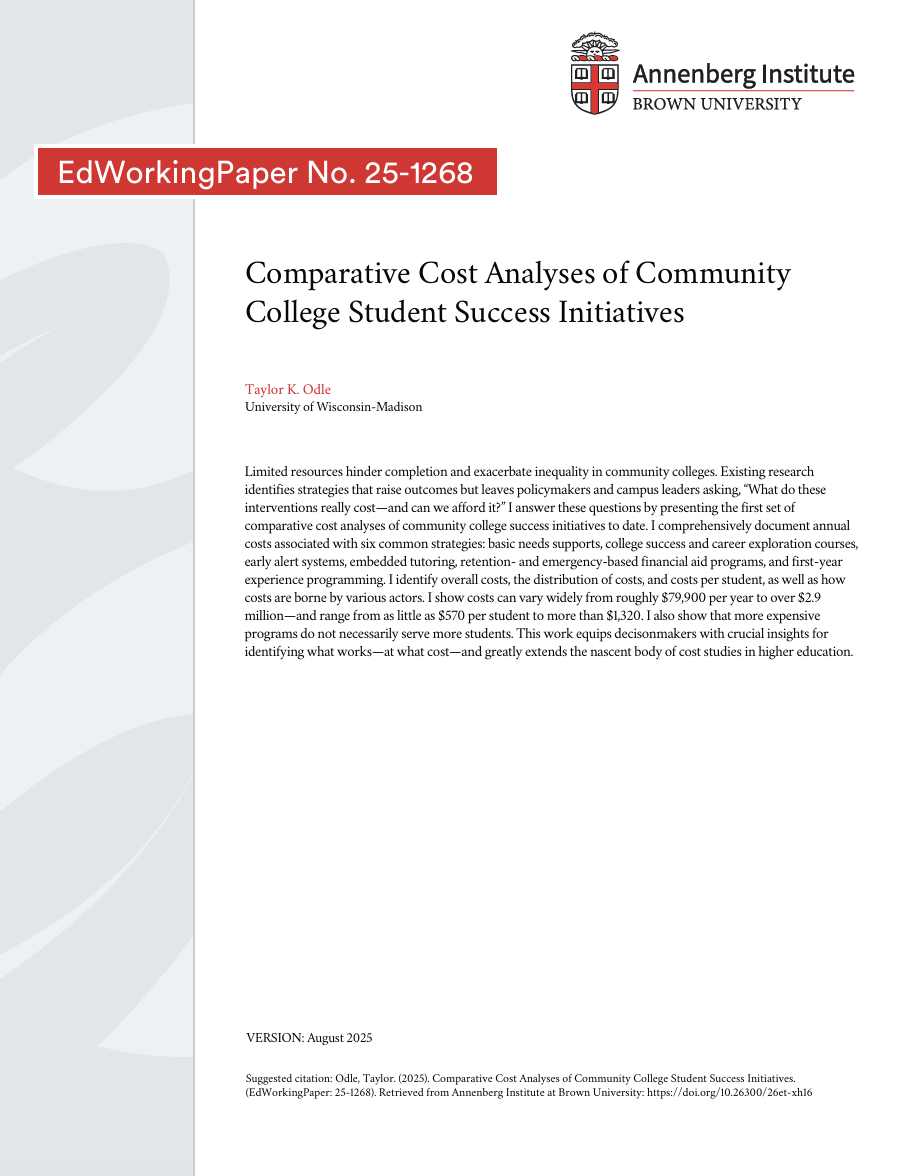
Limited resources hinder completion and exacerbate inequality in community colleges. Existing research identifies strategies that raise outcomes but leaves policymakers and campus leaders wondering about implementation costs. This paper presents the first set of comparative cost analyses of community college success initiatives to date; it comprehensively documents annual costs associated with six common strategies: basic needs supports, college success and career exploration courses, early alert systems, embedded tutoring, retention- and emergency-based financial aid programs, and first-year experience programming.
The paper identifies overall costs, the distribution of costs, and costs per student, as well as how costs are borne by various actors. It also shows that costs can vary widely and that more expensive programs do not necessarily serve more students. The research presented in this paper equips decision makers with crucial insights for identifying what works—at what cost—and extends the nascent body of cost studies in higher education.
